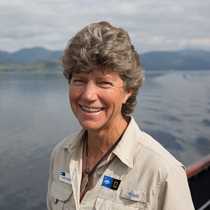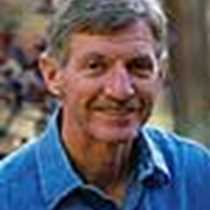Morning found us working our way up Neptune’s Staircase, a series of eight locks that raises the canal by 62 feet (19 meters) over a quarter of a mile. Progressing through Neptune’s Staircase provides a great lesson on the machinations of the locks, and it took us almost an hour and a half. Despite the rainy weather, many guests stood out to watch the opening and closing of the gates as we made our way up through the locks.
Just after Neptune’s Staircase, Robin gave a presentation on Scotland’s moors, describing both their ecology and cultural significance. Moors are composed of a mix of heather, bog, and grassland. They provide habitat for unique flora and fauna, including two species of insectivorous plants, the sundew and butterwort. The peat bogs in the moors are important for people for a variety of reasons, providing everything from fuel to recreational opportunities to grouse hunting.
Traveling northeast along the canal, we passed through Moy Bridge just before lunch, the last remaining working Telford-designed bridge on the canal, one that is still hand cranked. We then sailed through the narrow, tree-lined stretch known as Laggan Avenue, the only section of the canal where the canal had to be cut down into the land to reach its full depth. Trees line this stretch, planted to stabilize the soil piled on the canal banks when it was built, creating a verdant, peaceful sail through the Avenue. Shortly after Laggan Avenue, the ship entered Loch Oich, the highest part of the Canal at 106 feet (32 meters) above sea level.
After lunch, David gave a talk about Thomas Telford (1757-1834), who engineered the Caledonian Canal. Telford was responsible for numerous roads, canals, and bridges across Great Britain. We have encountered Telford’s works everywhere from a bridge in Sligachan Glen, roads on Mull, and of course the workings of the Caledonian Canal itself.
At Kytra Lock, two groups disembarked. One group set off in kayaks down the canal while the other group took a stroll along the tow path. Both groups were heading to Fort Augustus at the south end of Loch Ness, our destination for the night. We waved at our fellow passengers as the ship sailed by. We all rejoined in Fort Augustus, a small town that started life as a in 1729 as part of the effort to subdue the Jacobites. It is named after William Augustus, second son of King George II, who led the government troops at the Battle of Culloden.
While at Fort Augustus, a few set off with David for a walk in the outskirts of town. The walkers set off on a loop that traversed peaceful sheep pastures and followed wooded lanes, with large oaks and ash lining the way. Along the way the group passed through the Kilchuimen cemetery, where poet Robert Burns’ close friend John Anderson is buried. There in the peaceful graveyard with its towering yew trees, David read the poem Burns’ wrote for his friend, “John Anderson, My Jo.”
For a special evening recap, we had a whisky tasting with our bartender Andy, who imparted his whisky-wisdom, sharing the intricacies of the making and tasting of this iconic drink. The day ended with a performance by local musicians, complete with accordion, fiddle, and a young boy on percussion, quite adept at playing the banana shaker.








